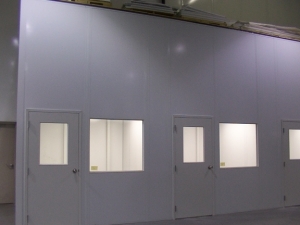Yes, the fall weather has finally arrived and it’s good to take some time off to enjoy it. As we all know, the winter months will soon be upon us. For manufacturing sites and distribution centers, dock doors are a huge drain on heating bills. Every time a truck pulls in to load or unload, the dock door comes up and all the heat goes out into the winter air. A dock seal creates a barrier between the truck and the dock opening to prevent the huge loss of warm air.
Dock Seals are a very reasonable investment, ranging from $700 to as much as $2000. In the dock seal world, “you get what you pay for” is the rule. Buyers should take a close look at the performance versus the cost. The performance of dock seals range from as low as 250 cycles, a cycle being each time a truck pulls in/out, up to 10,000 or even more cycles.
If you have a dock that only gets 1-2 trucks a day, then a lower cost dock seal may be all right for you. For high traffic docks, high-performance materials are a better investment. Make sure your vendor lists a cycle rating for any seal quoted. Please keep in mind that higher performance seals also use pleating, double stitching, weather resistant wood backing and other features to extend the life of the seal and prevent damage.
So, now is the time to take a look at the dock seals on your building and get the repaired or replaced before the cold weather sets in.


